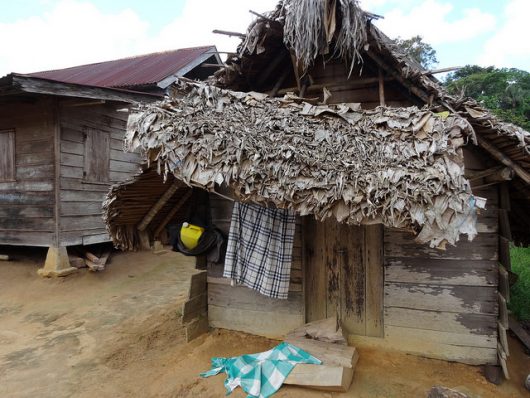The Current State of Hunger in Suriname
 The Republic of Suriname is a small northern South American country on the South Atlantic Ocean. The country is bordered by Guyana, French Guiana and Brazil. Explored by Spain, settled by the English and then became a Dutch colony, the country gained its independence in 1975. Its population of 646,758 is primarily settled along its 240-mile northern coast, with a 66.4% urban population. A third of the country’s population lives in the capital city of Paramaribo, as over 94% of the country is forest. Suriname is considered an upper-middle-income economy, with key exports of aluminum goods, gold and hydrocarbons. GDP primarily comprises services (48.3%) and industry (39.9%).
The Republic of Suriname is a small northern South American country on the South Atlantic Ocean. The country is bordered by Guyana, French Guiana and Brazil. Explored by Spain, settled by the English and then became a Dutch colony, the country gained its independence in 1975. Its population of 646,758 is primarily settled along its 240-mile northern coast, with a 66.4% urban population. A third of the country’s population lives in the capital city of Paramaribo, as over 94% of the country is forest. Suriname is considered an upper-middle-income economy, with key exports of aluminum goods, gold and hydrocarbons. GDP primarily comprises services (48.3%) and industry (39.9%).
Hunger in Suriname
The 2024 Global Hunger Index categorizes hunger in Suriname as Moderate, but it is very close to being considered Low. It ranks 55th out of the 127 countries assessed, with its score improving over 26% since 2000. Of the four components comprising the GHI score–% population undernourished, % children who die before age five, % children under five who are stunted or % wasted, all indicators are considered low, except for children wasted (5.2%).
The 2024 reported performance of Suriname on its achievement of the 17 U.N. Sustainable Development goals showed a score of 70%. On SDG2, Zero Hunger, Suriname is seen as moderately improving, but with challenges remaining, most significantly in the prevalence of obesity (adults), and with stagnation of undernourishment.
Nutrition in Suriname
According to the 2020 Global Nutrition Report, Suriname is “on course” to meet only one of the 13 global nutrition targets—childhood overweight. The country has made some progress regarding childhood stunting and exclusive breastfeeding. However, no progress or worsening was reported for anemia of women of childbearing age, low birth weight and wasting of children under 5, with all other indicators “off course.” As Suriname tackles the remaining challenges of SDG2, this will include the need to address the challenges of nutrition.
Climate Concerns and Food Production
Although only 0.3% of its land is arable, very little of the suitable land is being used for agriculture. Agricultural development economist Iwan Poerschke reports that 60% of Suriname’s consumed food is imported. However, he believes that the favorable climate and fertile soil would allow the country to become a “significant food supplier in the region,” as well as meet its own food needs. Poerschke feels that moving agriculture from an emphasis on small-scale production to action on a larger scale could achieve this. Challenges are, in part, related to mismanagement, insufficient sustainable agricultural development, and other factors. Rising sea levels and temperature often lead to flooding in the fertile coastal area. Although extreme heat in the August through November dry season can lead to drought, as it did in 2023.
Growth of the agricultural sector thus involves government investment, mitigation strategies for addressing climate concerns, research collaboration, organic and ecological farming and the acquisition of knowledge to facilitate these efforts. The country’s Agriculture, Livestock and Fisheries Minister has already referred to the need to adjust to climate challenges. Indeed, talks are taking place to provide crop insurance options.
A Small Country with a Bigger Impact
Suriname is a small country that does not have a significant food security problem. However, if Poerschke is correct, this small country can do more to provide for itself, as well as to contribute to food security in the region.
– Staff Reports
Photo: Flickr
